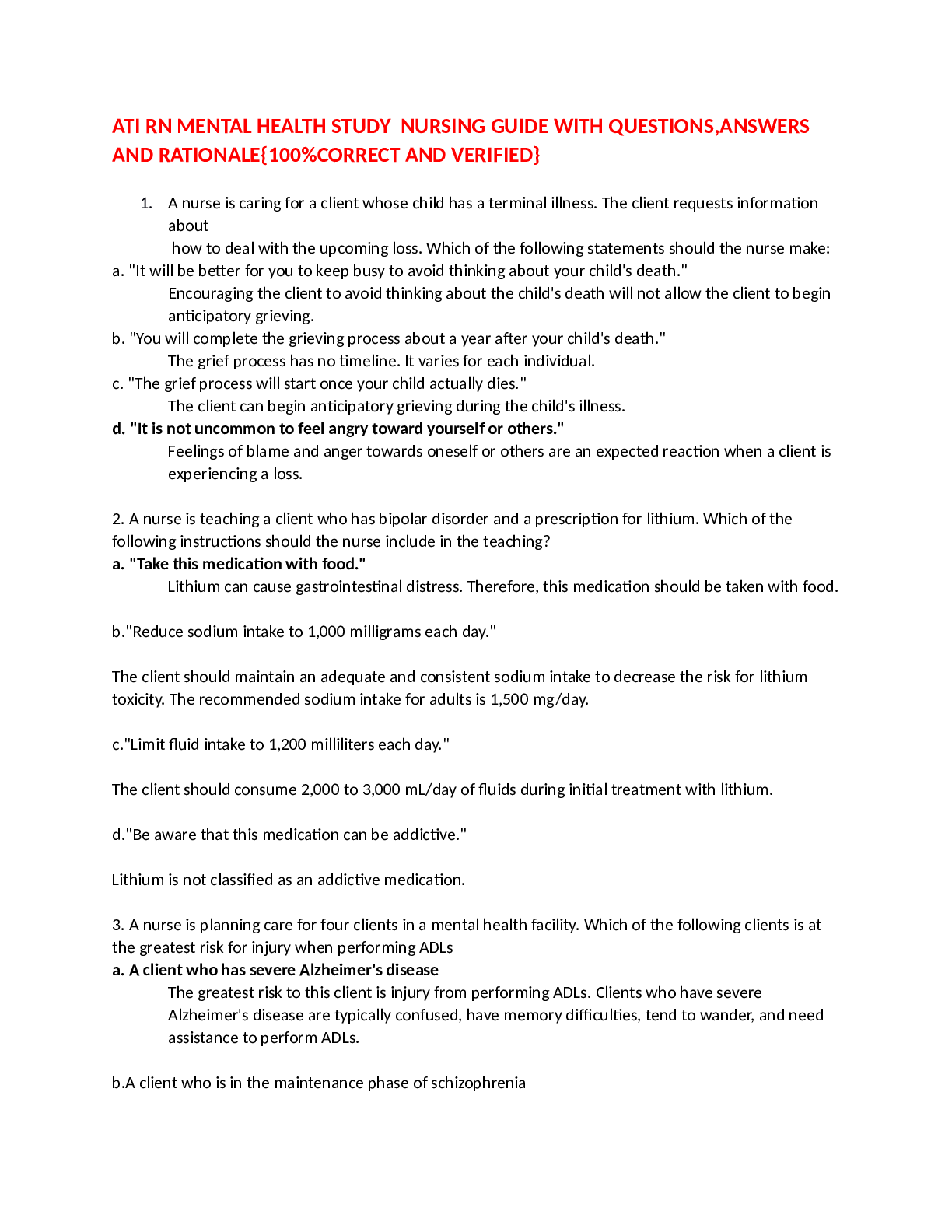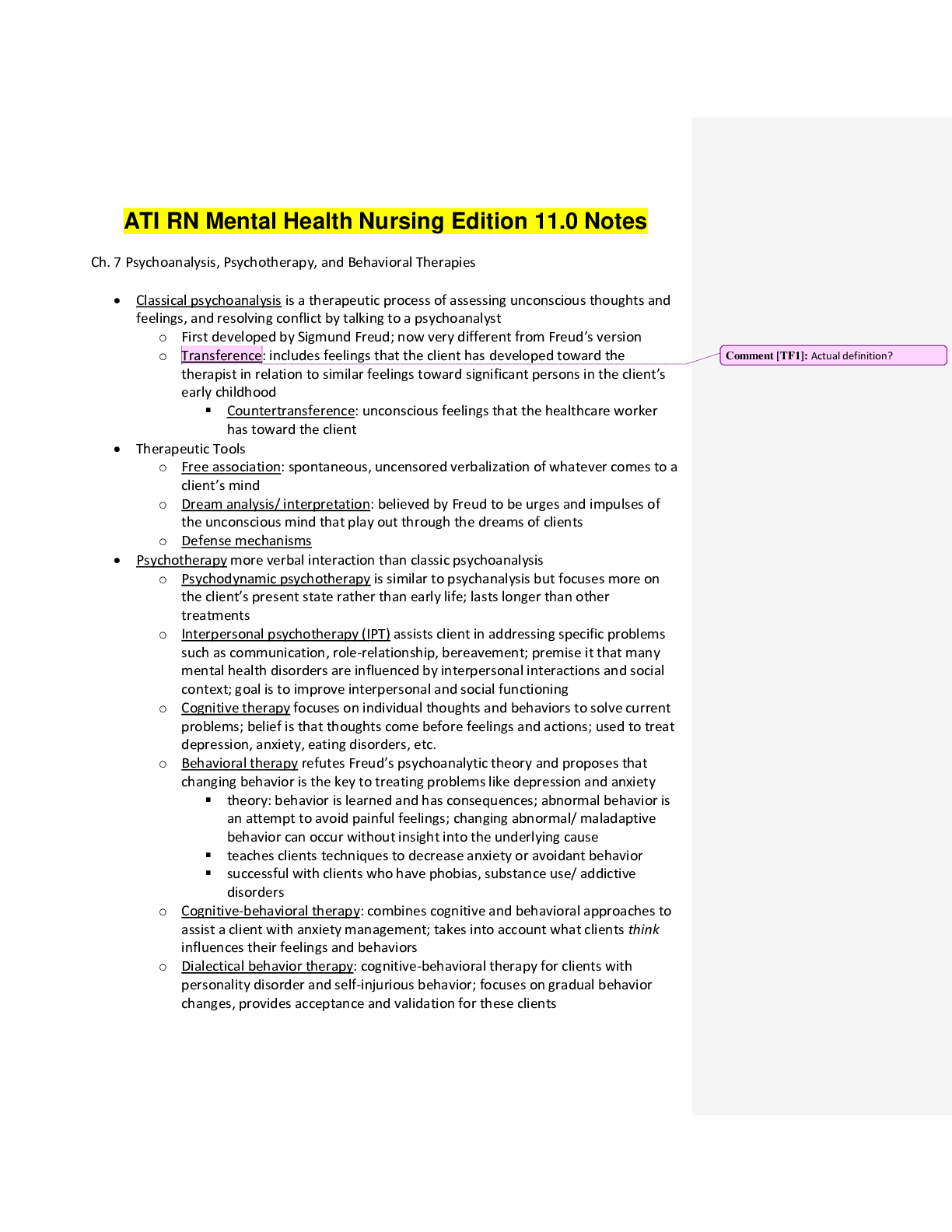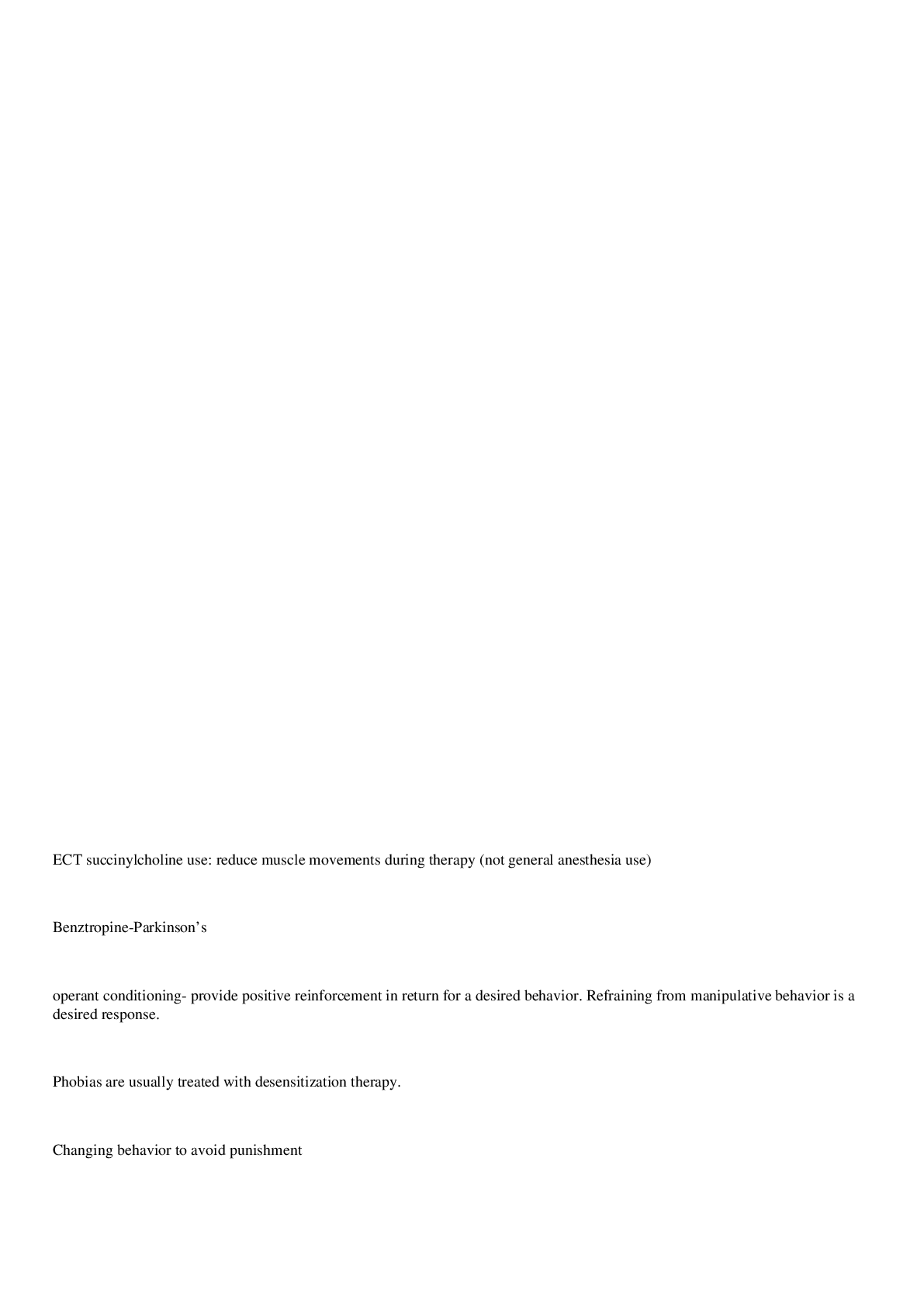*NURSING > QUESTIONS and ANSWERS > NURS 222 ATI RN Mental Health Online practice 2020 west coast university (All)
NURS 222 ATI RN Mental Health Online practice 2020 west coast university
Document Content and Description Below
1. When admitting a client to an inpatient mental health facility, a nurse notices that the client seems withdrawn and appears fearful. To establish a trusting nurse-client relationship, the nurse sho... uld first a. Introduce the client to other clients in the day room (working phase) b. Inform the client that her admission will be confidential (orientation phase) c. Assist the client in facilitating behavioral change (working phase) d. Determine coping strategies that the client has used in the past (working phase) 2. A nurse is reviewing the potential adverse effects of lithium with a client who began the medication 2 weeks ago. For which of the following should the nurse instruct the client to monitor and report to the provider? a. Hearing loss b. Dry persistent cough c. Bruising d. Coarse hand tremor (indication toxicity ) 3. A nurse is caring for a child who has conduct disorder and is behaving in a destructive manner, throwing objects, and kicking others. Which of the following therapeutic nursing interventions is the highest priority? a. Encourage expression of feelings (acknowledge them) b. Promote attendance at an assertiveness training group (how to be assertive rather than aggressive) c. Assist the client to perform relaxation breathing (assist the child to calm down) d. Use a therapeutic holding technique (the greatest risk to this child and others is harm? Therefore, the nurse’s priority intervention is to use a therapeutic holding technique to de-escalate the behavior and prevent injury) 4. A nurse in a mental health facility observes a client who is experiencing panic level of anxiety. Which of the following actions should the nurse take first? a. Teach the client a relaxation technique (after the attack has subsided to prevent further escalations of anxiety) b. Establish an exercise routine for the client (after the attack has subsided to prevent further escalations anxiety) c. Assist the client to identify anxiety triggers d. Accompany the client to a quiet room 5. A nurse is caring for a client who is taking chlorpromazine for schizophrenia. Which of the following assessment findings indicates that the client is experiencing extrapyramidal adverse effects? a. Fever and sore throat (indicate agranulocytosis) b. Urinary retention (Anticholinergic side effect) c. Postural hypotension (cardiovascular side effect) d. Lip smacking and tongue rolling (indicate long-term extrapyramidal side effects associated with typical antipsychotic medications) 6. A nurse is preparing to administer diazepam 7.5 mg IV bolus to a client for alcohol withdrawal. Available is diazepam injection 5 mg/ml. How many mL should the nurse administer? (round the answer to the nearest tenth. Use a leading zero if applicable. Do not use a trailing zero.) 1.5 mL 7. A nurse is assessing a client in the emergency department. The client appears agitated, his blood pressure is 152/94 mm Hg, his heart rate is 104/min, and his pupils are dilated. The nurse should suspect intoxication with which of the following substances? a. Heroin (intoxication constricted pupils, decrease blood pressure) b. Cocaine (intoxication cause tachycardia, elevated blood pressure, dilated pupils and agitation) c. Benzodiazepines (decreased blood pressure) d. Inhalants (central nervous system depression) 8. A nurse is educating the parent of a child who has a new diagnosis of autism spectrum disorder. Which of the following characteristics of this disorder should the nurse include in the teaching? a. Fear of abandonment (separation anxiety disorder) b. Language delay (autism spectrum disorder) c. Hostile behavior (oppositional defiant disorder) d. Motor and verbal tics (Tourette’s disorder) 9. A nurse is leading a group therapy session when a client becomes agitated and yells, “Listening to all of you is making me worse!” which of the following is an appropriate response? a. “You sound angry and frustrated. Tell us more about how you are feeling?” ( the nurse is making observations and exploring the client’s feelings to demonstrate caring) b. “Maybe you would like to go to another group from now on.” (nurse’s response is showing disapproval of the client and can make all of the clients defensive) c. “Let’s not talk about this now. We will talk more about this in our individual session.” (minimizing the client’s immediate concerns and feelings) d. “Do any of the other group members feel this way?”(showing disapproval of the client and can make all of the clients defensive) 10. A home health nurse is assessing an older adult client who lives alone. Which of the following finding should indicate to the nurse that the client is experiencing delirium? a. Sudden onset (suddenly over hours to days) b. Euthymic mood ( clients who have delirium have rapid mood swings) c. Flat affect (demonstrate expressions of feelings) d. Slow speech (raid, inappropriate speech and language) 11. A nurse is caring for a client who has schizophrenia. The treatment plan is for the client to increase his autonomy from his parents. Prior to discharge, the nurse should plan to a. Stress to the client that he need to be more independent (does not give him skills to gain autonomy. The nurse must assist the client to learn these skills) b. Schedule a family conference (Allows the nurse to work with both the client and his family to make an action plan for increased autonomy. This is a positive step for the client prior to discharge) c. Tell the client not to visit his family so often (The client needs emotional support from his family. Decreasing family visits could be obstructive to his emotional well-being and would not necessarily increase autonomy) d. Arrange housing placement for the client in another town (The client needs emotional support from his family. Moving him to another city could isolate him from this support an d would not necessarily increase autonomy) 12. A nurse in a provider’s office is talking with a client who has diabetes mellitus and an HbA1c of 8.5%. The client states that she is under a lot of stress and that she doesn’t want to talk about her diabetes mellitus right now. Based on these comments, the nurse should note that the client is demonstrating which of the following defense mechanisms? a. Suppression ( the client is suppressing her feelings about dealing with having a chronic illness when she consciously denies her current health status) b. Conversion (the client demonstrates conversion if she unconsciously converted her anxiety into physical symptoms) c. Displacement (the client demonstrates displacement if she transferred her feelings about her illness to another less threatening situation) d. Reaction formation (The client demonstrates reaction formation if she demonstrated the opposite behavior of what she is really feeling) 13. A nurse is caring for a client who has schizophrenia in a mental health facility. Which of the following places the client at greatest risk for self-directed injury or injuring others? a. Inability to communicate with others b. Feelings of absence of self-worth c. Lack of motivation to perform daily tasks d. Command hallucinations (A client who has schizophrenia and is experiencing command hallucinations may be told to hurt himself or others. Therefore, a client who is experiencing command hallucinations is at greatest risk for self-directed injury or injuring others) [Show More]
Last updated: 1 year ago
Preview 1 out of 12 pages
Instant download
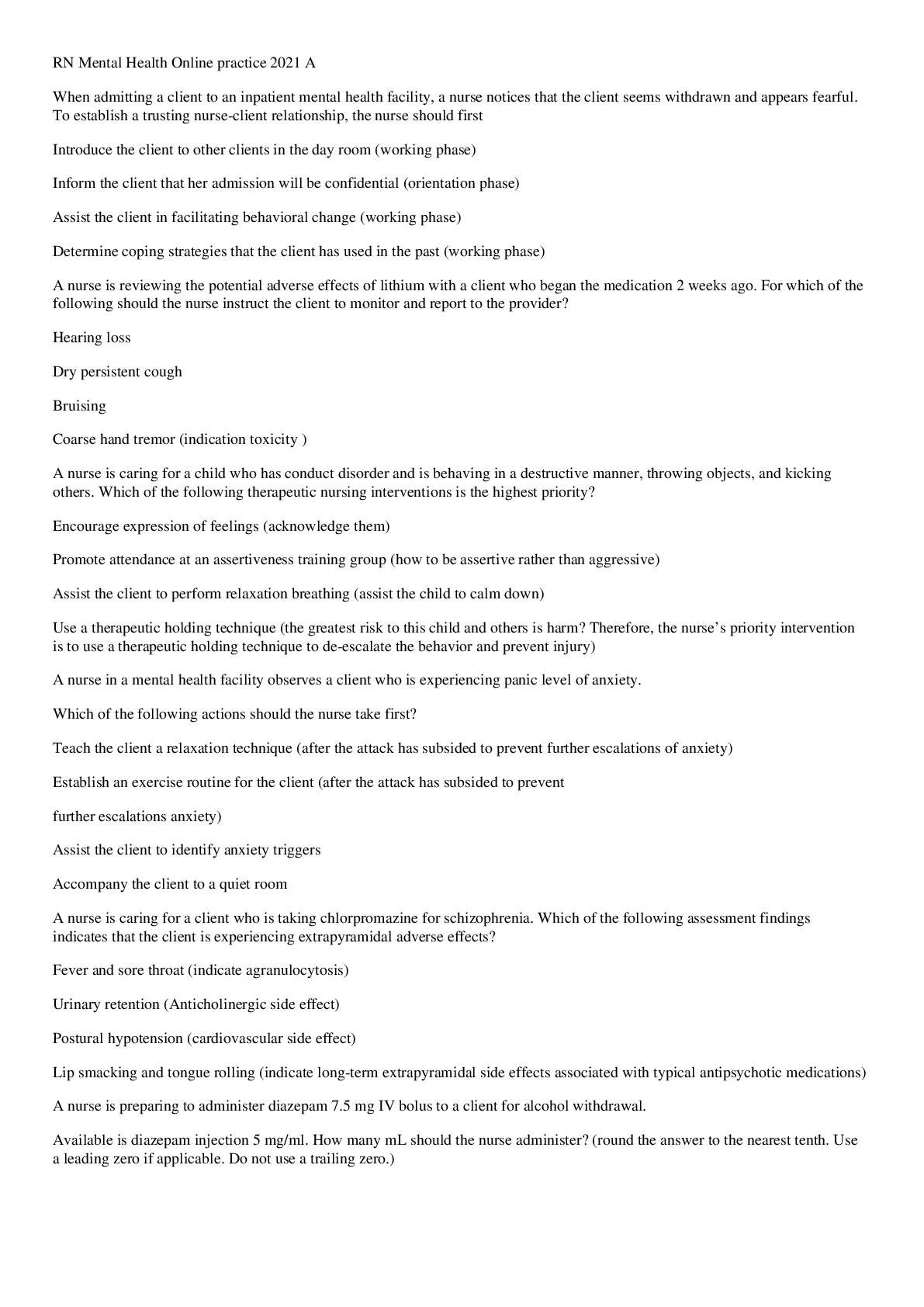
Buy this document to get the full access instantly
Instant Download Access after purchase
Add to cartInstant download
Reviews( 0 )
Document information
Connected school, study & course
About the document
Uploaded On
Mar 20, 2021
Number of pages
12
Written in
Additional information
This document has been written for:
Uploaded
Mar 20, 2021
Downloads
0
Views
50

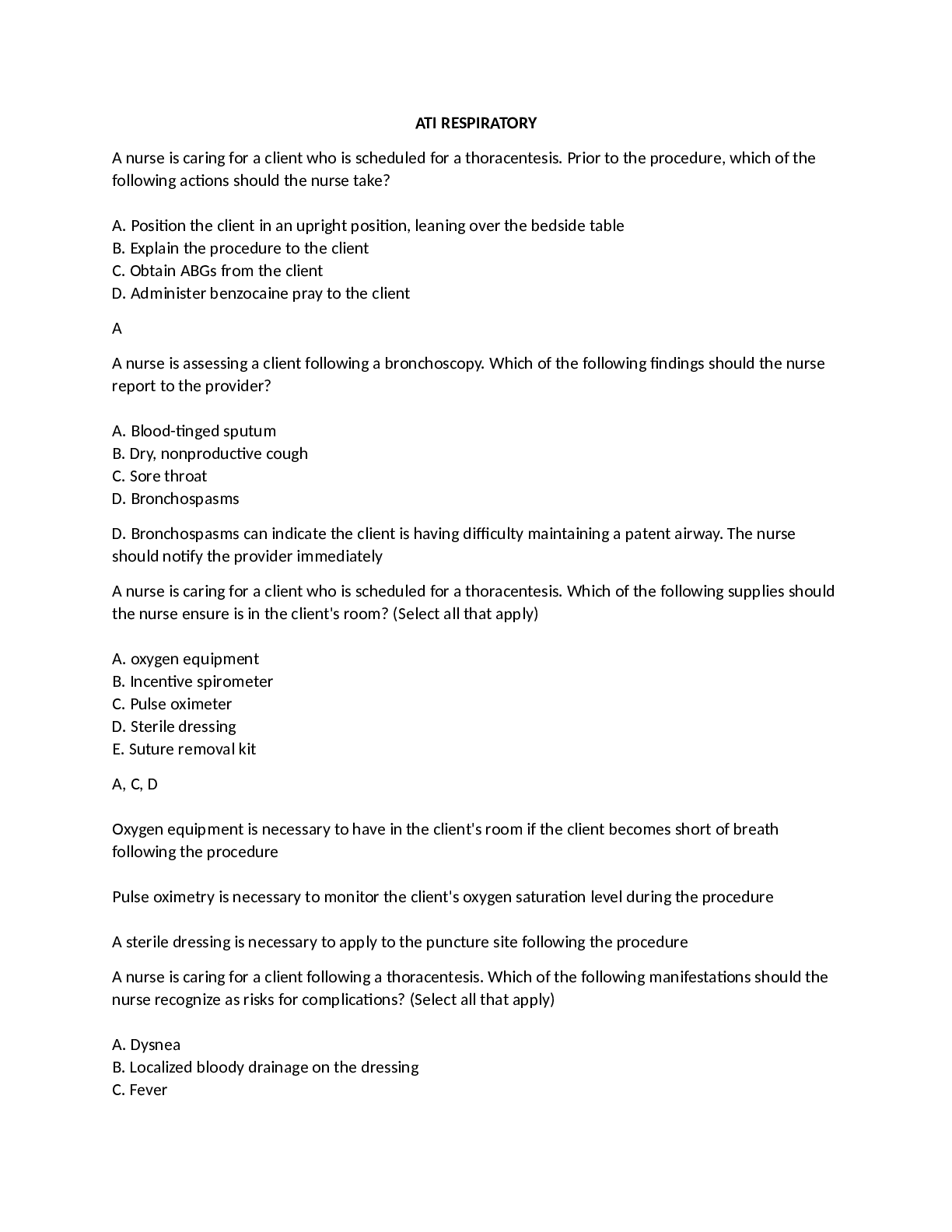

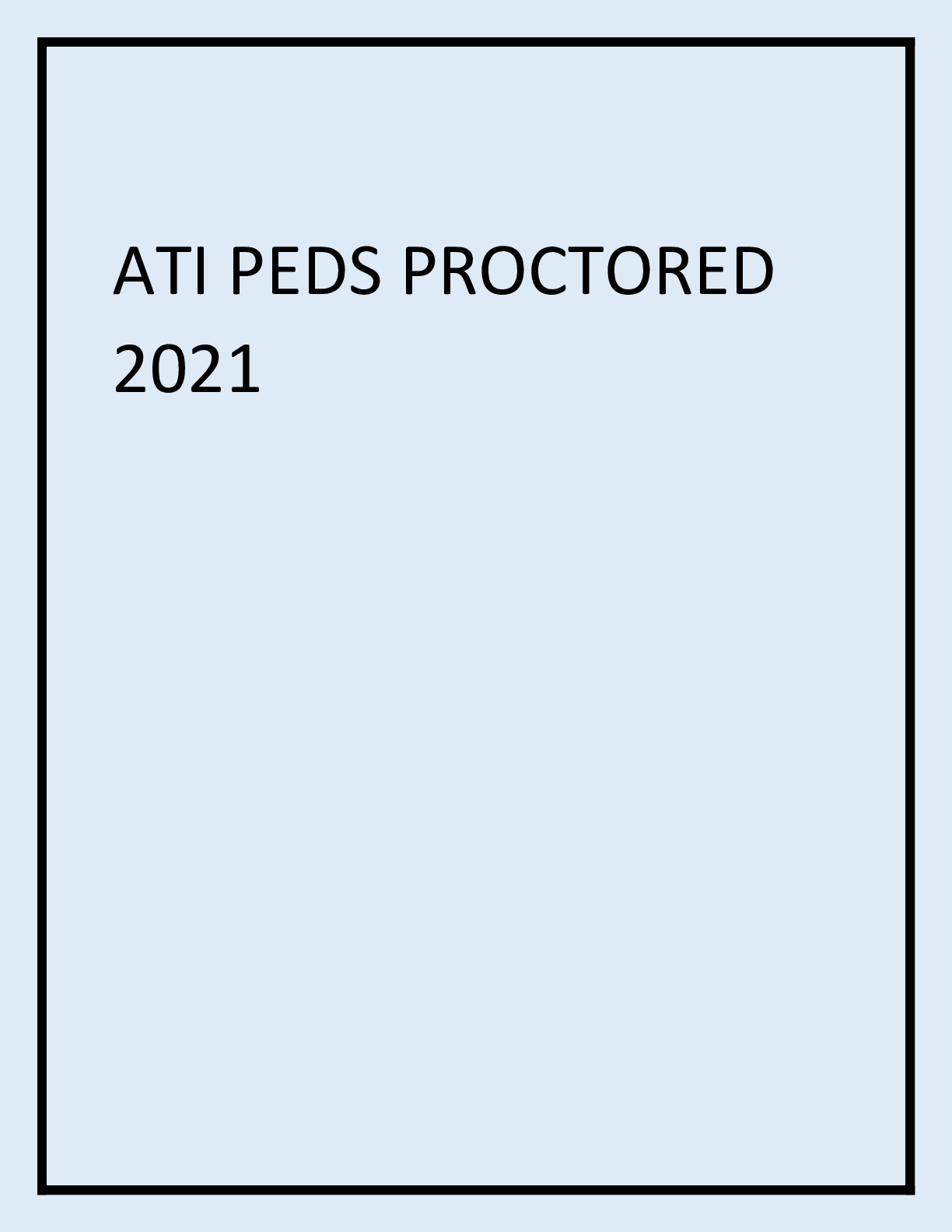

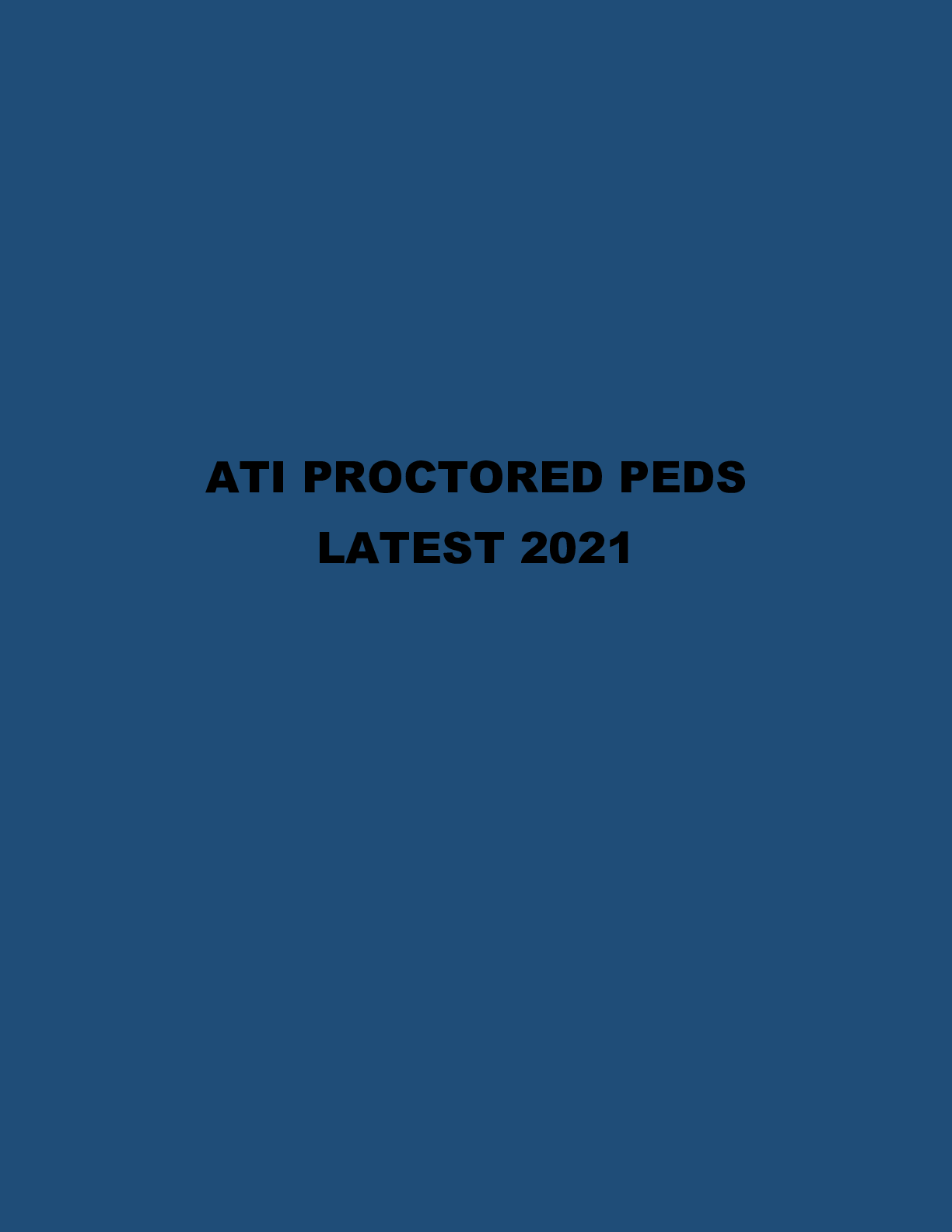
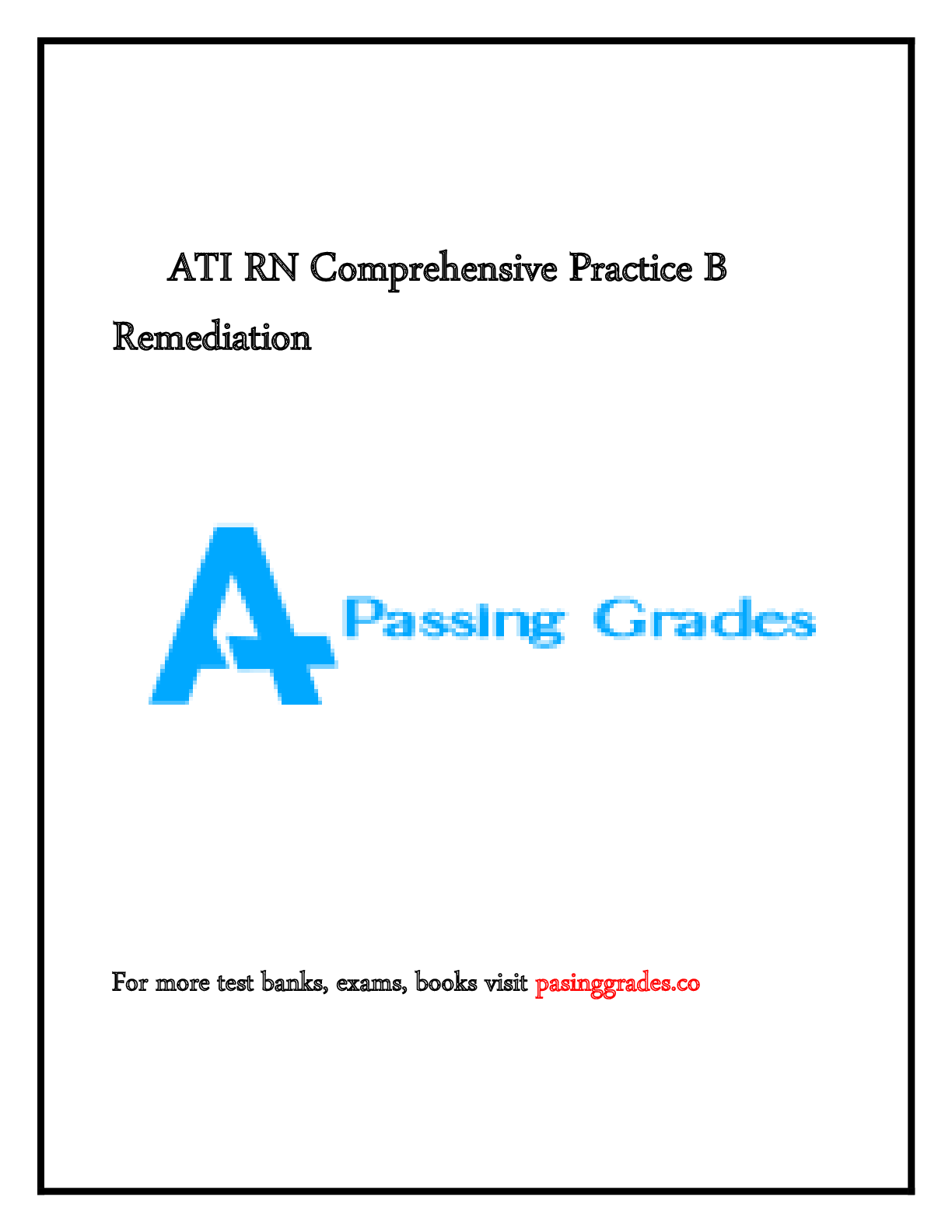
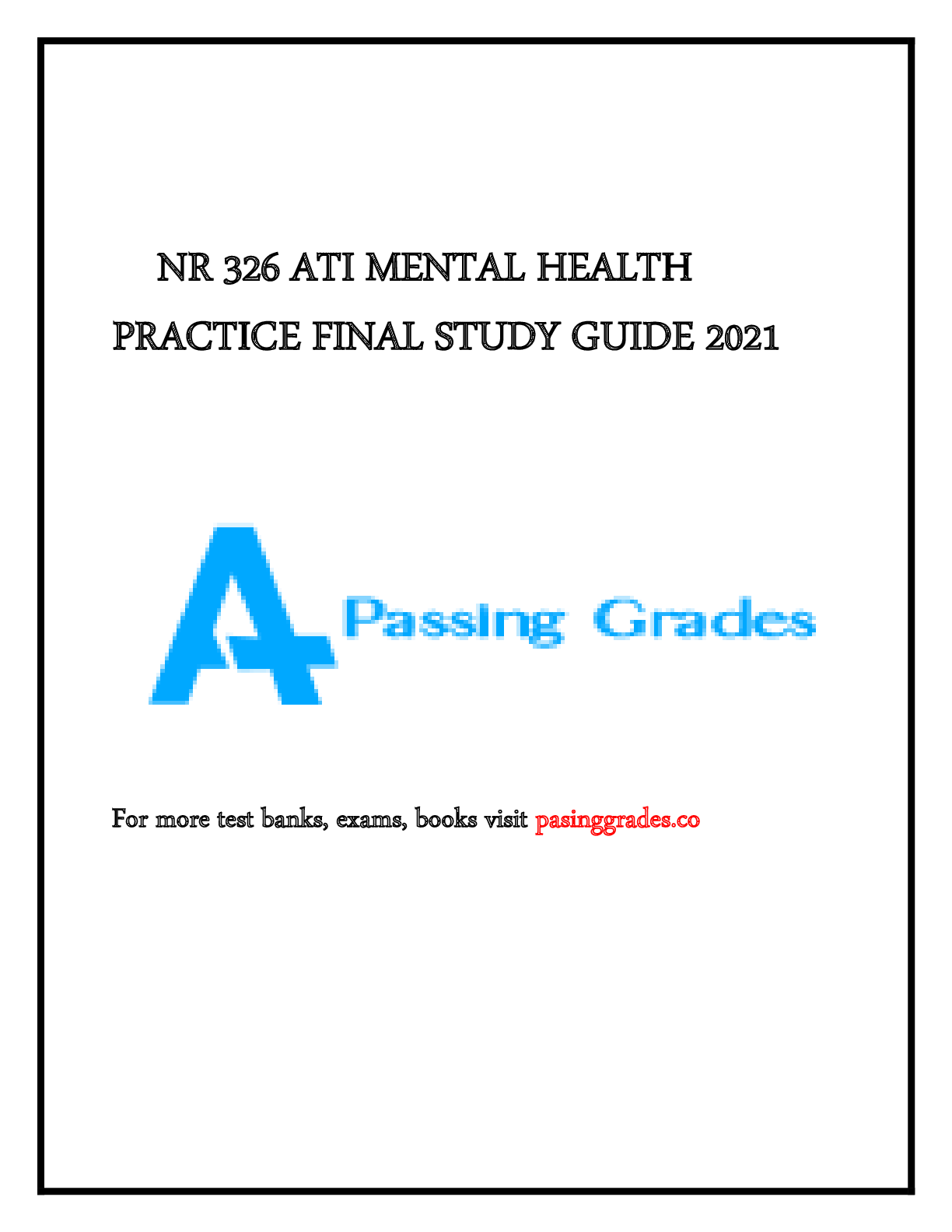
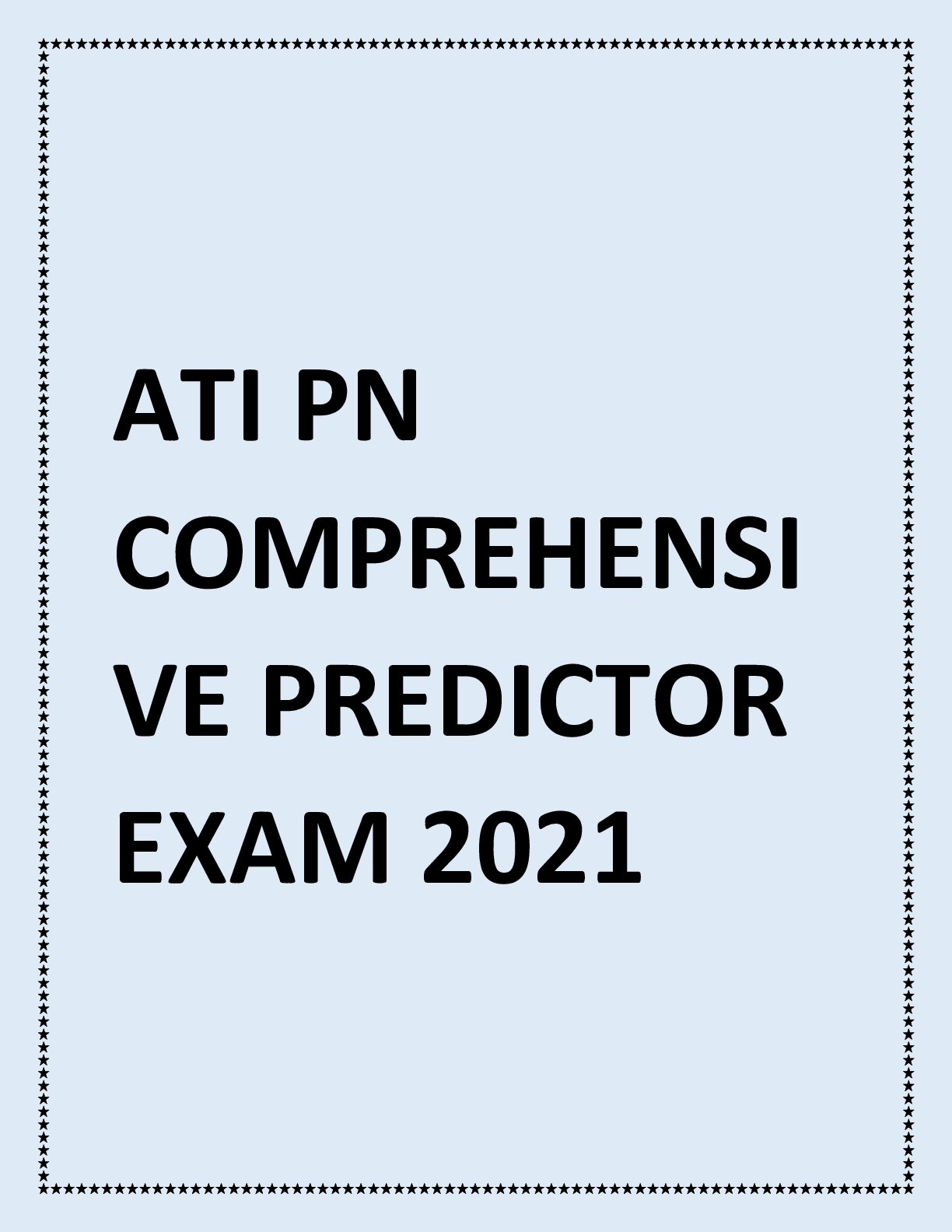

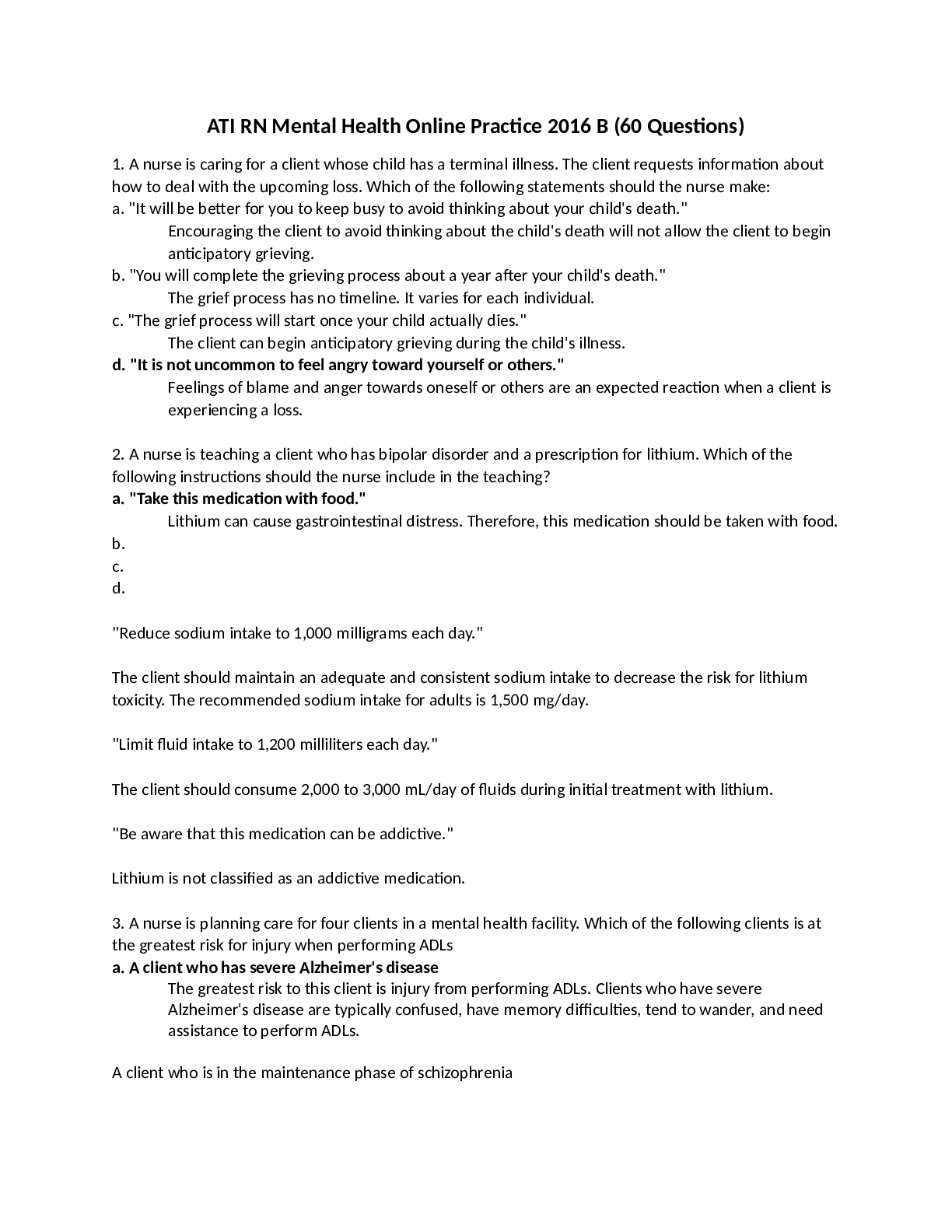
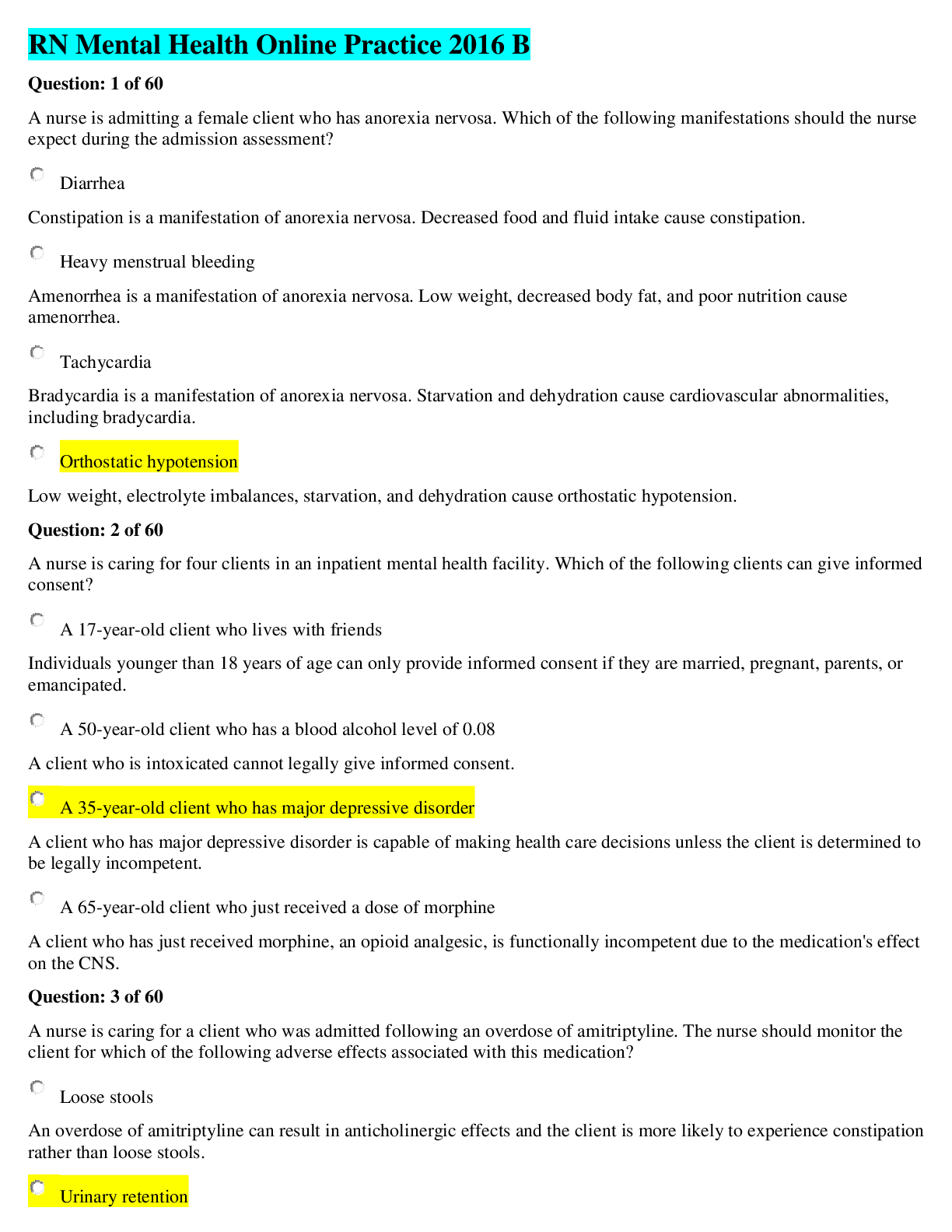
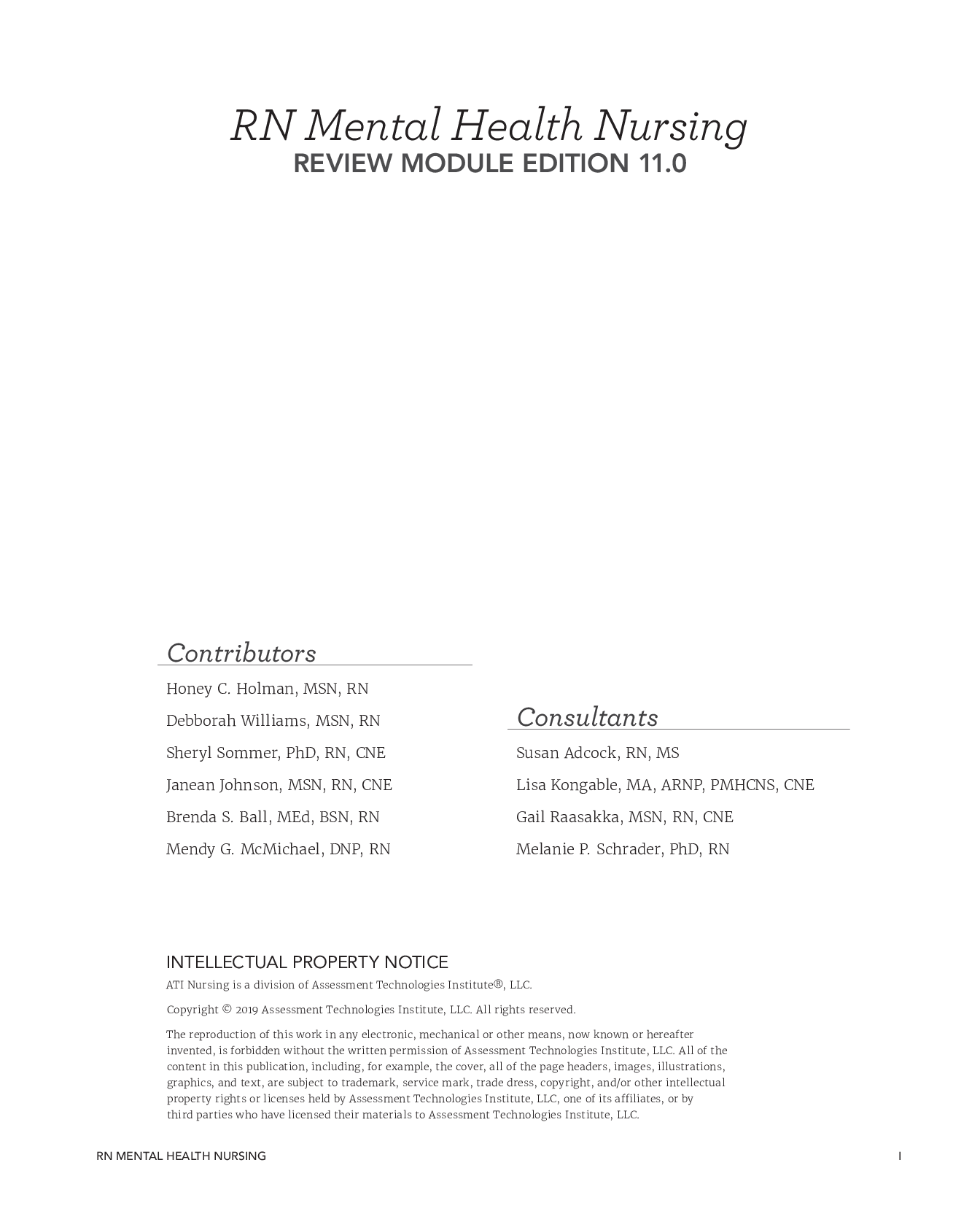
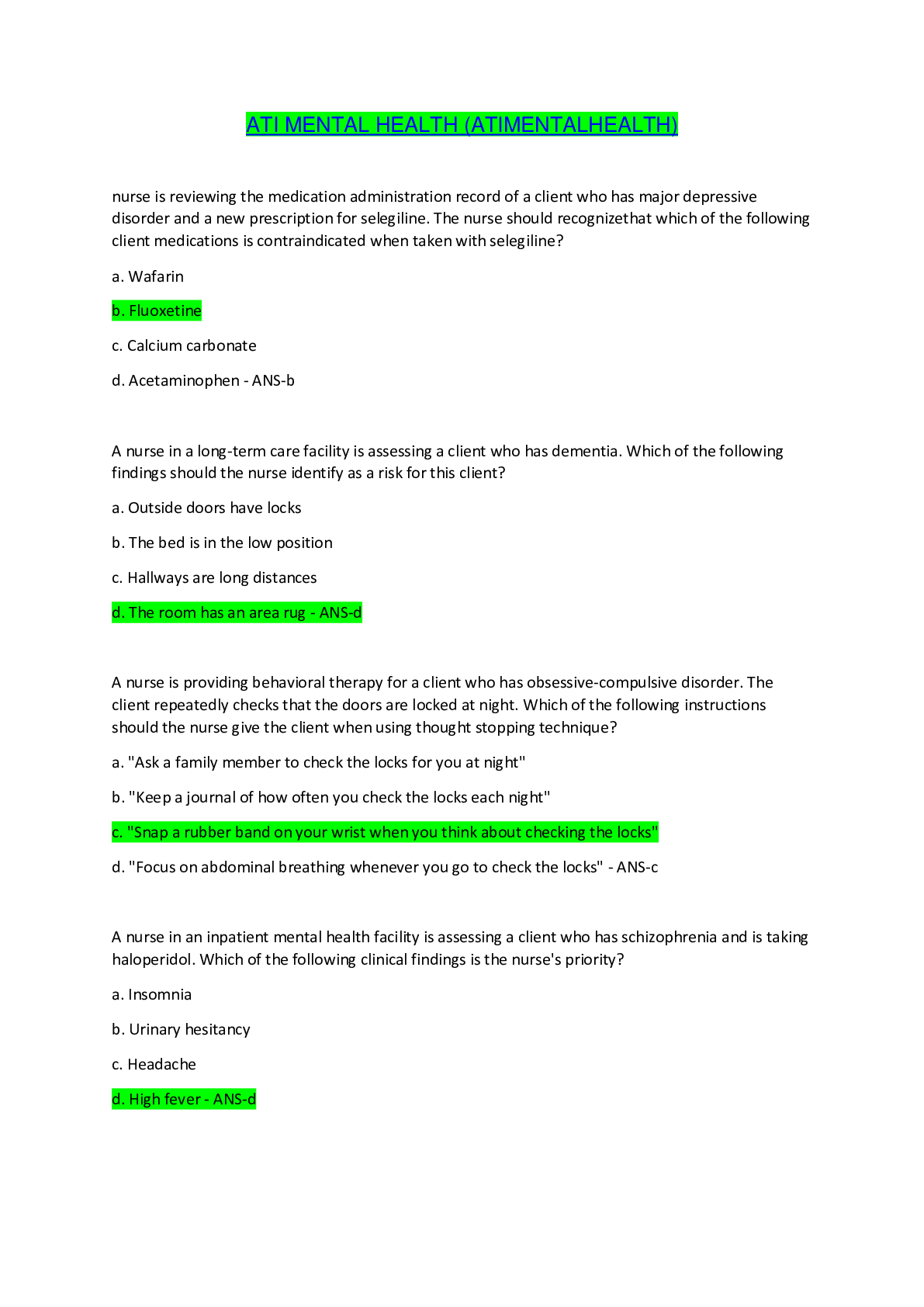
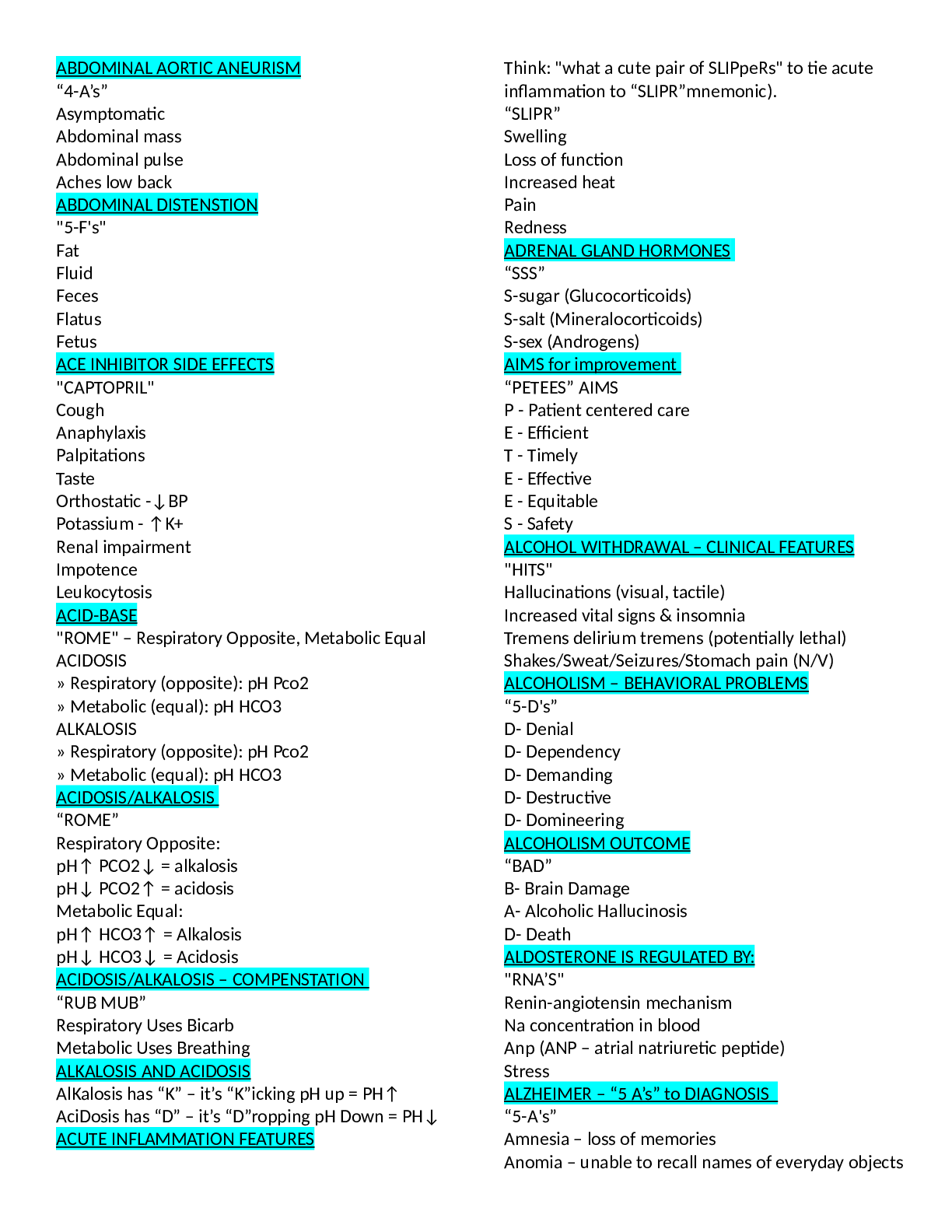
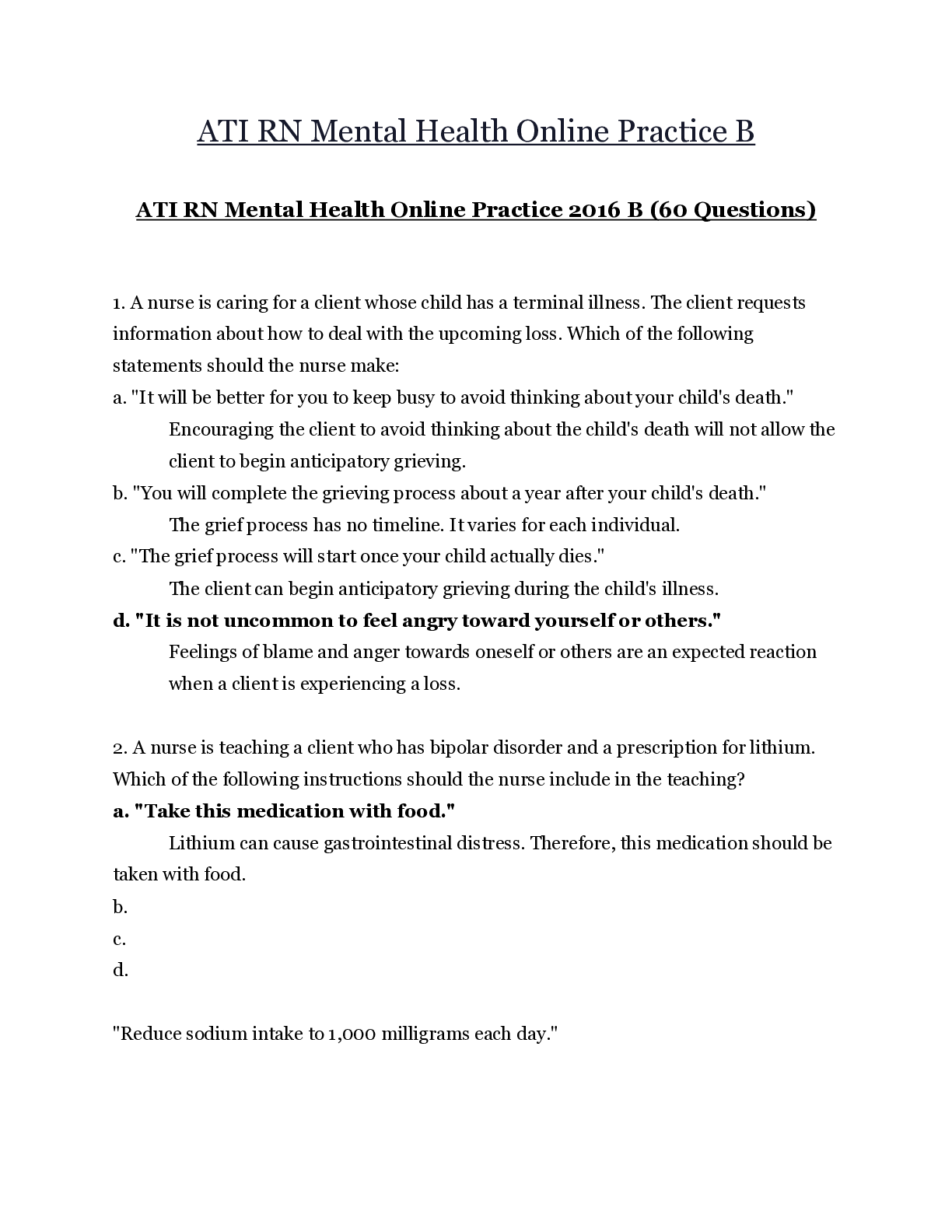
.png)
